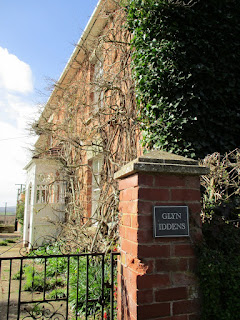What an amazing February for walking.
All of the domestic daffodils are out, both in town
and in the garden, but not the indigenous wild daffies of the Forest.

Once a common sight throughout Gloucestershire, and its county flower, these small blooms, once bred for market, are now found mainly in the "golden triangle", near the villages of Dymock, Kempley and Oxenhall. Each year these villages organise a festivals, including guided walks to see the flowers and all provide teas in the village halls . Dymock is worth visiting any weekend in season as the Poet’s Church serve tea and cakes through March and April. Well worth a visit.
This years events:
Oxenhall weekend is 16th & 17th March;
Kempley weekend 23rd & 24th March (look out for the Kempley Tardis :)
Dymock weekend 30th & 31st March – check out the Poets Corner in the Norman Church of St Marys.
In the years before World War I, Dymock became the base for a group of writers who became known as the Dymock Poets. The group, which included Rupert Brooke, Wilfred Gibson, Edward Thomas and Lascelles Abercrombie, and was later joined by Robert Frost. it was also from here that Brooke published his War Sonnets, including The Soldier (If I should die, think only this of me...). Brooke and Thomas died in the War.
All, I think, are 10am – 5pm.
Painswick Rococo gardens were ablaze, fields of gold and a sprinkling of wild woodland flowers.
and finished with the traditional tea n cake this time at the wonderfully friendly village cafe - The Painswick Pooch :)

























